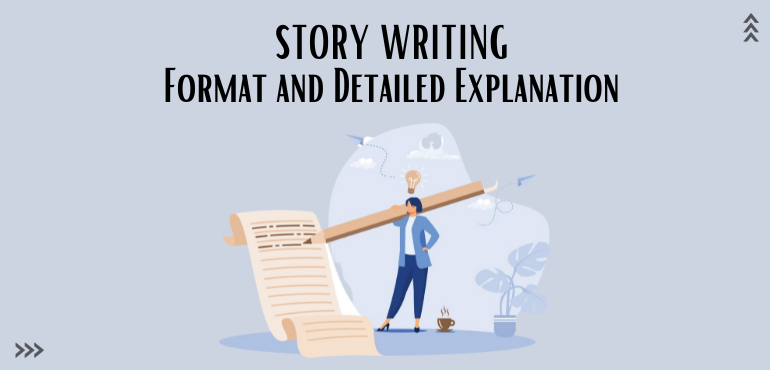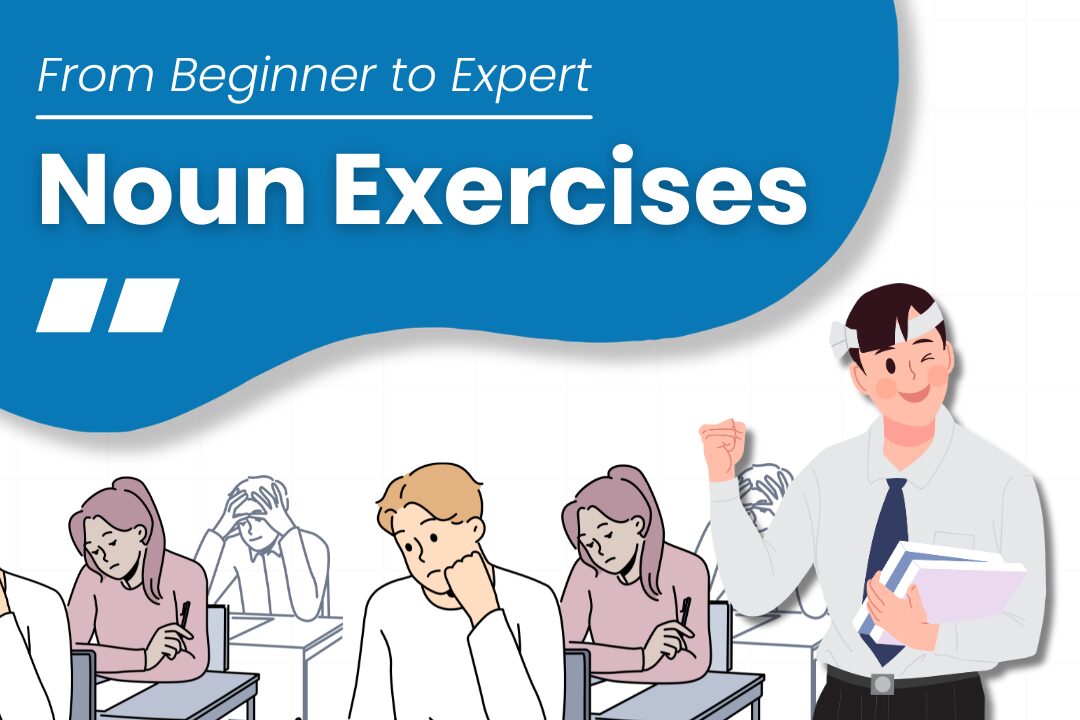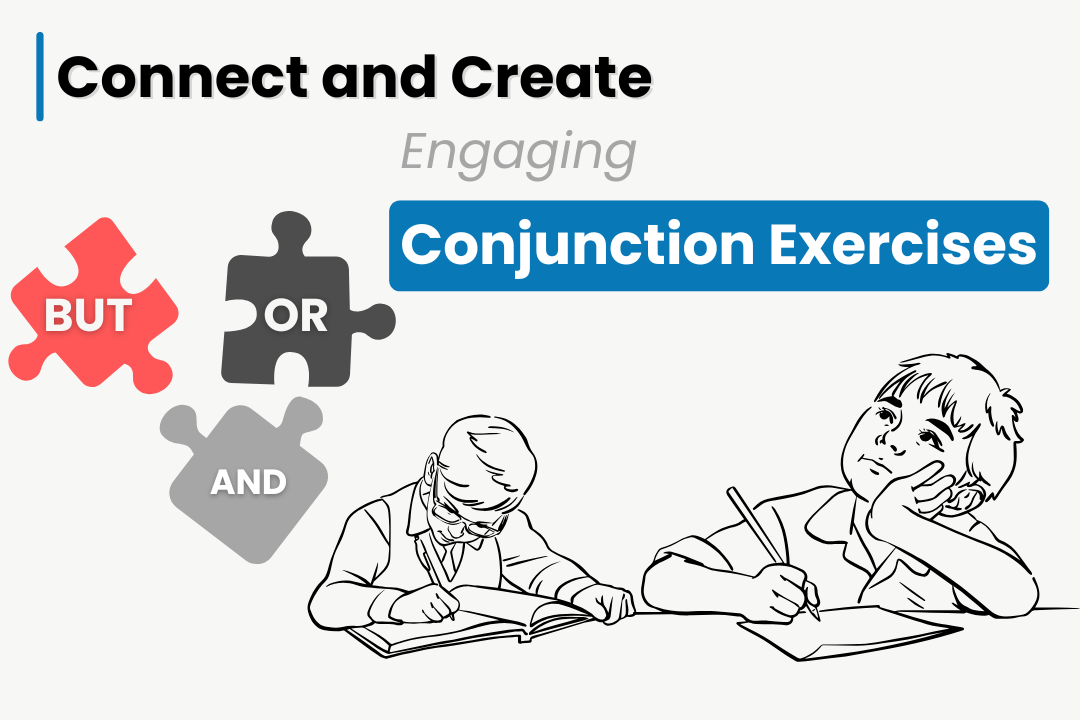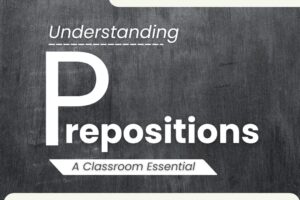
Want to try story writing? Is writing stories your newest pastime? If so, here’s your chance to discover everything that can help you write stories. Story writing for class 10, along with message writing, can be a fun and rewarding activity that can enhance your imagination, expression, and communication skills. This article will help you through every step you need to take when sitting down to create a narrative, ensuring and enabling you to write one on your own.
What is Story Writing?
Story writing is a type of writing where the author tells the story of a sequence of events that resulted in an issue, how that problem developed, and how the outcome brought the characters to where they are now. A story might have fictitious or real-life people and an occurrence that happened or is fake.
Students are needed to compose stories in class as a part of the English language class, which also includes composition writing. Students’ verbal proficiency and capacity for original thought are both enhanced by this. Experience the joy of creating a narrative, and you may find that story jotting becomes a fascinating pastime. Once you understand the numerous parts of a story and how to organize them, you can produce a well-drafted story more fluently.
Different Types of Stories
Different types of stories are ways of classifying stories based on their content, form, style, or purpose. Stories can be classified into two broad sets: fiction and nonfiction. Fiction stories are stories that are constructed or imagined by the author, while nonfiction stories are stories that are based on facts or reality.
Fiction stories can be further divided into many subcategories, such as:
- Fantasy: Harry Potter, The Lord of the Rings, and The Chronicles of Narnia.
- Science fiction: The Hunger Games, The Martian, and 1984.
- Horror: Dracula, The Shining, and The Exorcist.
- Mystery: Sherlock Holmes, Agatha Christie, and The Girl with the Dragon Tattoo.
- Romance: Pride and Prejudice, Twilight, and The Notebook.
- Historical fiction: War and Peace, The Book Thief, and The Da Vinci Code.
Nonfiction stories can also be divided into many subcategories, such as:
- Biography: Anne Frank: The Diary of a Young Girl, Steve Jobs, and I Am Malala.
- Autobiography: The Autobiography of Benjamin Franklin, Long Walk to Freedom, and Becoming.
- Memoir: Night, Eat Pray Love, and Educated.
- Essay: A Modest Proposal, Why I Write, and A Room of One’s Own.
- Reportage: In Cold Blood, The Looming Tower, and The New Jim Crow.
Components of a Story
Is there anyone who doesn’t enjoy stories, either read or heard? All of us must have fallen asleep as kids to hear bedtime stories told by our parents, grandparents, or siblings. Now, have you ever wished you could create a gripping narrative that was identical to what you read or heard? Have you attempted to analyze the narrative’s constituent parts? Do you know what are the components?
Every story is expected to have five components, namely,
- Characters
- Setting
- Plot
- Theme
- Conflict
A tale furthermore has a style of writing and a point of view from which it is told or shown, whereas debate writing has three main components of persuasion. Let’s now take a closer look at each element.
Characters:
A story is only complete with a protagonist. Either one or more characters would be at the center of every narrative. Characters drive stories. Strong characters—funny, serious, brilliant, naive, etc.—will be what keep the plot captivating and fascinating.
Setting:
The term ‘setting’ refers to the physical surroundings in which the story takes place. The whereabouts of the characters might also contribute to the setting of the story. The setting of a story can be a forest, a house, a street, space or outer universe, a small island, a train or even someone’s mind. It is up to the writer to include all the details that they think would make the story more colorful.
Plot:
Plot is an expression that most of us are familiar with, but what exactly does it mean? A story’s plot can be defined as simply the events or subject matter of the story. Plots have different paths taken by characters, corners, and judgments. After all, the key to creating a compelling story is having a well-drafted plot.
A plot comprises five different elements, namely,
- Exposition: The point at which the characters and setting of the story are presented; in other terms, the beginning of the story.
- Rising Action: The point in the story when the main character comes across an action or a course of events that becomes an impediment or a conflict in the otherwise undisturbed peaceful life of the main character and those around them.
- Climax: The most intriguing part of a story which also becomes the turning point of the story.
- Falling Action: This includes actions or events that lead to the conclusion. This point describes the positive or negative turn of events that has taken place as a result of the protagonist’s decision at the climax. At this point, you can also see how the various characters work together or alone to solve the problem or conflict.
- Conclusion: This point in the story marks the end. It is here that you get to know how everything has settled. The conclusion, be it a happy or a sad one, is the end result of the falling action.
Theme:
A story’s theme is the concept or topic that runs across the whole narrative. The entire plot is centered around this idea. Themes can include things like music, war, revolt, love and romance, and family dynamics. For example, the themes of the animated movies “Brave” and “Moana” include defying societal conventions, going against the grain and following your heart, while the love of music and the value of family is central to the story of “Coco.”
Conflict:
The term ‘ conflict ’ refers to the problem in the story. When all is going well, there’s one point in the story when the main characters come across a hurdle that impedes their travel to achieve a set thing. The conflict is what gets the protagonist to move out of their comfort zone, face the antagonist, act bravely to break the problem and find ways to attain their thing.
Format of the Story
Basically, every story should have a beginning, middle, and end. A story with all of these would look and sound complete.
The Beginning
Just like every other piece of writing, the beginning of the story is what will determine if the reader would want to continue reading or not. So it is very crucial to have a rather riveting start. You have got to keep the readers hooked from the very first moment itself. The age-old and most common way to start a story is with the use of phrases like “A long time ago” or “Once upon a time.” You must have seen it being used in many children’s stories. However, this need not always be the case. You can start the story directly with the character introduction, the portrayal of the setting, or even an action.
The Middle
The plot will not benefit in the slightest by starting on a fantastic note and having it drag later. The story must continue. Use literary methods, intelligent word choice, and, if you believe it will advance the plot, even the slightest detail. Further assistance may be provided by using descriptive language, which will help your readers visualize everything that is happening in the story.
The End
A good story author knows when to drop the curtains for the readers. also, if you want to write a good story, you must know when to conclude. You must have seen an open ending in numerous writings; that’s also an option you can choose. Remember that you need not always give a very agreeable ending or the ending that your audience might anticipate. You’re free to end the story according to your discretion. The only thing you’ll have to bear in mind is to give the story the ending it deserves.
Guidelines for Writing a Good Story: Structuring the Story
To write a compelling story, you need to have a proper structure, which is not as formal as the format of writing an advertisement. In a formal format, you will require a heading, body, and conclusion, but in story writing, it is not as such.
The first thing that you can do is evaluate your ideas and put down your thoughts on paper or a tablet when you sit down to create a story based on something you have been thinking about for a while or simply for fun. You may begin organizing the story once you have sketched down every idea you have.
Who are Your Characters?
This is one of the most influential parts of the story. The diversity of your characters and the way you describe their characteristics will decide your reader’s interest in your story. Introducing the characters can be done in different ways – you can tell the entire story from one of the character’s points of view, include conversations between various characters or indeed have a narrator introduce the characters and give their background information.
- Imperfect Character
No one is flawless, and a fictional character shouldn’t be either. A flawed character gets a lot more attention than one who is flawless. There will always be character flaws, even in seemingly flawless characters.
- Vices in Character
Because all people have both virtues and vices, most writers prefer to give their main characters either problems that add excitement to their path or vices that ultimately lead to their demise. The author may captivate readers till the very end by revealing the character’s vices and tribulations. Let’s say a character fights to get the one thing they desire throughout the novel, or perhaps their arrogance is the reason for their collapse. Therefore, if you want to draw readers into your tale, incorporating vices or challenges might help you stand out.
Where is the Story Taking Place?
Have you read any stories where the entire setting is from a specific era of history, or where the plot is set on a stormy night? Selecting a location for your story is essential; it will influence many aspects of its writing. After all, the tone of the story may be established by the setting.
What is Happening in the Story?
Explain the setting and all that’s passing in the story. The readers will be able to understand everything that’s passing because of the manner in which you depict every event. You want the readers to witness themselves as if they’re in the story’s setting with the characters, witnessing everything firsthand. This may be achieved by making them feel like one of the characters in the narrative. This will enkindle the fashionability of your story.
How Does Your Story End?
The story’s conclusion is just as significant as its beginning. Your story might have an upbeat or woeful ending. Indeed, you may end your narrative with a thriller to heighten the suspension and let the reader use their imagination. A thriller is the ideal system to conclude a narrative if you want to produce an effect since it sets the reader up for anticipation.
Tips to Become a Pro at Story Writing
- Read a lot of stories.
- Write every day.
- Plan your story.
- Follow the story elements.
- Use dialogue and description.
- Vary your sentences and words.
- Use the senses and emotions.
- Show your personality and voice.
- Edit and proofread your story.
- Get feedback and learn from it.
Examples of Story Writing
Here is an example of a short story for class 10 based on the format and tips discussed in the article:
Example 1:
The Boy Who Could Fly
A little child by the name of Oliver used to reside in a tiny town. Oliver was a typical youngster in most aspects, but he possessed a unique ability: the ability to fly.
Oliver was a little lad when he first realized he had a gift. He was on his lawn having fun when all of a sudden he felt himself rise off the ground. Feeling the sun on his face and the wind on his hair, he flew through the air. Oliver practiced flying for hours since he was so excited about his newfound skill.
Oliver first kept his gift a secret from everyone. If others found out he could fly, he feared what they would say. However, Oliver witnessed a group of youngsters being harassed by bigger kids one day when he was playing at the park. Oliver descended from the skies and scared the bullies away since he didn’t want to merely observe.
Oliver astounded the kids, and soon word of his talent spread across the community. Oliver rose to fame in his community by using his skills to aid others. He would frequently search the town by air for anyone in need of assistance, and he would always be willing to help.
Oliver’s ability to fly was a gift to the community. He improved the world and demonstrated to everyone that, with enough self-belief, everything is achievable.
Example 2:
The Perfect Twig
Walking through the forest, I came across a little bird that enjoyed flying from one tree to another. He sounded to be looking for something. I stood there observing him. I wished to help him, but I didn’t know what he was looking for. I didn’t want to alarm him or disturb him more.
Eventually, he alighted to pick up a particular Y-shaped twig. I followed him to see where he was headed, and I set him up on one of the most beautifully bloomed trees. It was the last thing that was needed to complete the nest, and it fit impeccably well.
Seeing this, I walked down happily, thinking to myself how numerous people shooed down birds as soon as they caught sight of them. And I was just glad I didn’t do it because if I did, the bird would not have set up that perfect branch.








